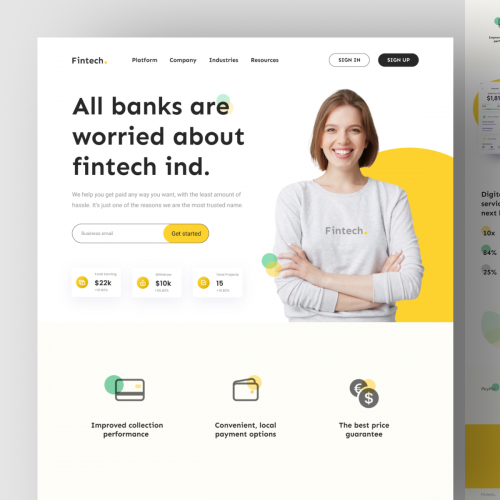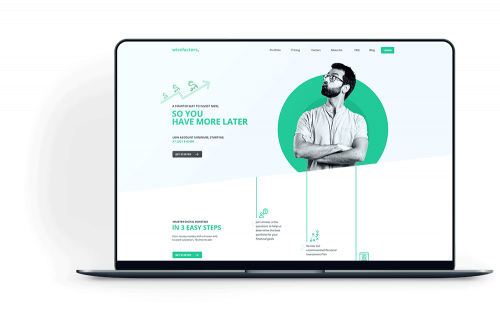Why Website Design in copyright Is the Best Choice for Small Businesses
Why Website Design in copyright Is the Best Choice for Small Businesses
Blog Article
Crucial Tips for Crafting High-Impact Site Designs
In the realm of digital marketing, the layout of a site serves as an essential touchpoint for involving potential clients. To develop high-impact web site designs, one should take into consideration important aspects such as audience understanding, individual experience, and aesthetic pecking order.
Understand Your Target Market
Recognizing your target market is essential to effective web site layout. A web site that reverberates with its visitors is commonly the result of extensive study and insights right into user demographics, habits, and preferences. Determining target users permits developers to tailor web content, visuals, and capabilities that satisfy their certain needs, boosting involvement and complete satisfaction.
To efficiently understand your target market, start by conducting group analyses to collect information on age, sex, area, and passions. This details works as a structure for developing individual personalities, which stand for the crucial features of your target audience. These personalities overview decision-making in style elements and content approach, ensuring positioning with user expectations.
In addition, assessing user actions with tools like Google Analytics can expose just how visitors communicate with your website. Metrics such as bounce prices and time on web page can highlight areas that need improvement or change. User studies and feedback also offer very useful understandings into choices and pain points.
Eventually, a deep understanding of your audience is not merely valuable but crucial. It encourages designers to create even more pertinent, attractive, and useful sites that foster a positive individual experience and drive preferred outcomes.
Prioritize Individual Experience
When developing a website, focusing on individual experience (UX) is vital to accomplishing both user fulfillment and organization goals. A well-crafted UX makes certain that site visitors can browse the site effortlessly, locate the information they require, and involve with content successfully. To complete this, it is essential to embrace a user-centered style method that entails understanding user requires, choices, and actions.
Start by conducting extensive study, consisting of customer studies and functionality screening, to gather understandings right into exactly how users communicate with your website. This information ought to notify layout choices, guaranteeing that formats and functions line up with user expectations. Structured navigation is vital; visitors need to be able to find info promptly without unneeded clicks or confusion.

Lastly, make sure that your web site comes to all individuals, consisting of those with impairments. Complying with availability standards not only widens your target market but additionally cultivates inclusivity. By focusing on UX, you lay the foundation for an effective internet site that satisfies both individual requires and business objectives.
Embrace Visual Pecking Order
A well-structured visual pecking order plays a considerable function in enhancing user experience by leading visitors' attention to the most vital elements of an internet site. By strategically preparing web content, designers can create a clear course for customers to follow, ensuring they involve with essential details properly.

In addition, the placement of components on the page is critical. Leading the visitor's look with the format can be achieved by positioning essential info on top or in the center, where customers commonly start their visual trip. Including whitespace around aspects can likewise improve quality, making it easier for customers to process details without feeling bewildered.
Last but not least, utilizing typography efficiently contributes to visual hierarchy. Different typeface dimensions, weights, and website link designs can denote significance, directing individuals with the material flawlessly. By embracing these principles, designers can develop an intuitive experience that promotes interaction and encourages customers to explore better.
Enhance for Mobile
Mobile optimization is important in today's digital landscape, as a considerable part of web traffic originates from smart phones. To make certain a seamless individual experience, web sites need to be created with mobile customers in mind. This includes using responsive internet layout techniques that adjust the layout, photos, and text to fit various display sizes while keeping functionality and aesthetic appeals.
First, prioritize packing speed, as mobile users frequently operate on slower networks. Optimize pictures and decrease code to enhance efficiency. In addition, navigation should be instinctive; think about implementing a streamlined menu that enables very easy access to crucial web pages without frustrating individuals.
Touch targets, such as links and switches, must be properly sized, ensuring they are quickly tappable without mistakes. In addition, guarantee that types are mobile-friendly by reducing input areas and making use of dropdowns where appropriate, improving the customer experience.
Finally, examination your site across different mobile gadgets and internet browsers to determine any issues that may influence functionality. By prioritizing mobile optimization, you not just enhance customer satisfaction but additionally positively influence your website's internet search engine ranking, hence drawing pop over to this site in even more visitors and improving total interaction.
Implement Strong Branding
A well-defined brand name not just separates you from competitors but likewise fosters count on and commitment among your target market. This identification ought to be reflected consistently throughout all electronic touchpoints, including your web site, social media, and email interactions.
Aesthetic aspects such as logos, color pattern, and typography play a crucial duty in branding. Pick a color scheme that reverberates with your target market and reflects your brand individuality. Ensure that your logo design is versatile and prominently shown on your website, improving brand name recognition.
Web content is equally essential; your tone of voice ought to align with your brand identification, whether it's professional, friendly, or authoritative. Involving narration can additionally strengthen your brand name, producing an emotional connection with individuals.
Conclusion
In conclusion, crafting high-impact internet site styles necessitates a complex method that includes understanding the audience, focusing on user experience, and accepting aesthetic pecking order. Optimization for mobile phones stays necessary, alongside the execution of strong branding approaches. By integrating these aspects, internet sites can effectively involve customers, facilitate seamless navigating, and foster emotional links that enhance brand name identity. Ultimately, adherence to these principles contributes to the production of reliable and compelling electronic experiences that resonate with target market.
To produce high-impact website layouts, one should consider vital aspects such as target market understanding, customer experience, and aesthetic hierarchy.When creating a site, focusing on individual experience (UX) is extremely important to attaining both user fulfillment and business objectives.Start by conducting detailed study, including customer surveys and use testing, to collect insights right into exactly how users interact with your site. discover here To ensure a smooth individual experience, web sites must be created with mobile individuals in mind.In verdict, crafting high-impact site styles requires a diverse technique that encompasses comprehending the audience, prioritizing user experience, and accepting visual pecking order.
Report this page